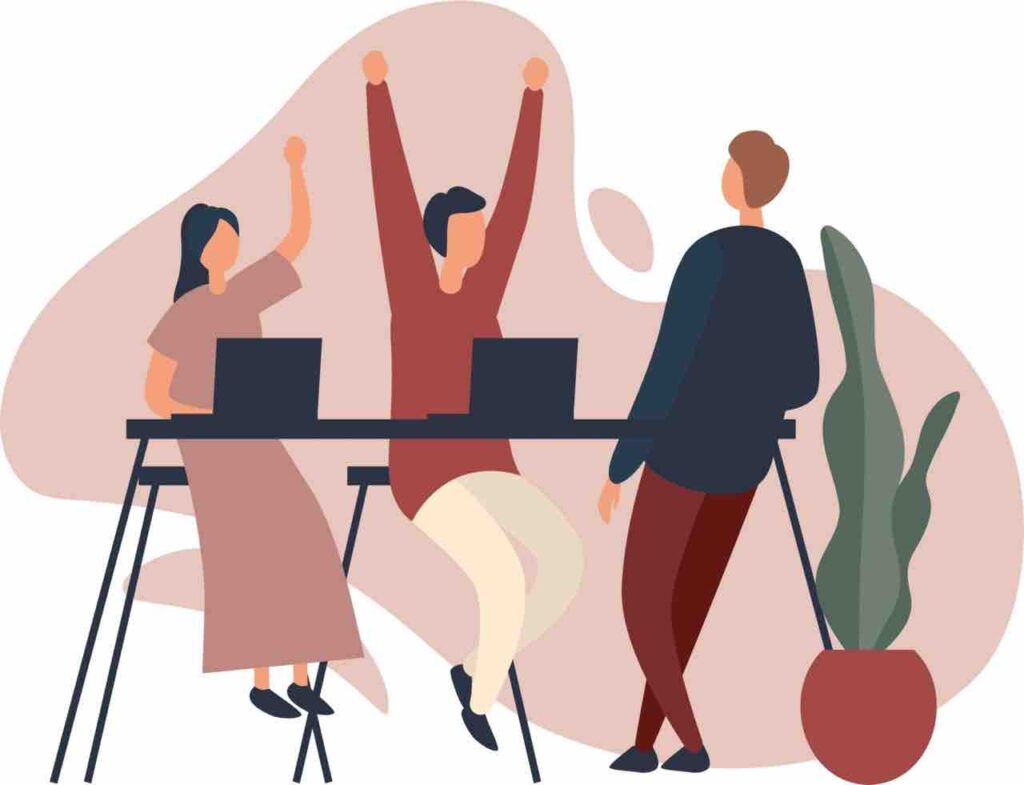The other day in a small medium-sized company...
A brief respite in summer 2020 between lockdown and lockdown. In compliance with all hygiene rules, wibas uses the time in August for internal collaboration and further training - really physically in the hygiene distance office. In the evening, we meet up outside for a barbecue. Everyone knows that: This special time gets to people in very different ways. Some of us are simply annoyed by the mask and social distancing. Others are frustrated because personal plans cannot be realized - from vacation destinations to familiar hobbies.
Nobody has chosen the changed order situation at wibas. Among colleagues, it is clear that some are already suffering from the winter blues in the middle of summer. What the company doesn't know: how well are employees currently doing at wibas? To find out, I conduct a survey. "Survey" is an unpopular word in many larger companies. A lot of effort is involved in conducting and evaluating it, there is often little enthusiasm when the results are announced and, unfortunately, it is often associated with the suspicion that nothing will change anyway.
Employee survey with a difference
1. how are you doing with and at wibas? On a scale from 0 to 10 (10 is very good). The result of 7.5 is not so winter bluesy. But perhaps the devil is in the detail? In the interview, some people thought out loud and differentiated between "10 for wibas" and "One topic annoys me personally, that only gets a 2" and then gave the average value of 6.
The answers to the magic wand questions were much more exciting and clarifying.
2. if you could do magic for once: What would you keep at wibas if you could only keep one thing? People often mention values and concepts such as: cooperation and people, being on an equal footing, flat hierarchies, the culture, agility and the opportunity for self-organization, transparency and the corporate culture in general.
3. if you could do magic again: What would you change at wibas ...? You can only change one thing ...
A colorful bouquet of answers. Some of them contradictory. Some would like to see the company grow - others fear that growth could mean losing the family atmosphere. Some want more focus in the topics, others are looking for even more variety. Some would like more praise, a higher salary, less friction with a team member or a larger chill corner than before. Several would like to see an even more conscious approach to the environment.

The answers to the magic wand questions also show that there is greater satisfaction with the working environment in the wibas teams where real agile teamwork is part of everyday working life. This satisfaction was never expressed by consultants who only work in internal teams on individual days of the month and whose daily routine is characterized by changing client assignments.
What do we do with these results?
The survey in itself has a positive effect. Feeling heard. To exchange ideas.
Sharing the results the very next day in a joint meeting reassures anyone who might have thought there was a big problem. Many interviews ended with sentences such as: "But all in all, this is all complaining at a very high level."
Now that the survey has been carried out and the results have been digested, we have identified three further lines of action. We would like to work on satisfaction at wibas:
The survey and the digestion of the results are embedded in three strands of action to work on satisfaction at wibas:
- Happiness as a shared framework
We want to define indicators of our satisfaction that we can use to measure our happiness and evaluate strategic alternatives. - Happiness as a lived community
We want to practise social techniques that help groups of people to engage with each other and become co-creatively innovative - Happiness as a practiced skill
We want to explore mindfulness practices together in order to create access to happiness, contentment and our own needs and thus get to know ourselves better.
Specifically, there are now individual initiatives by employees who are continuing to work on this. And in the short time we have for internal improvements. We don't want to dutifully complete all the points from the survey. Instead, we are holding joint sessions to see which of the points are particularly important right now, where our energy is going.
At one of the next meetings, two colleagues will contribute their knowledge and experience in conflict management and mediation. They prepare something so that personal sensitivities can be addressed differently.
Some feel more called to give individual impulses for mindfulness to the group.
The "Green wibas" interest group gets another boost.
And some points from the survey may be directly suitable as indicators of satisfaction in our company.

The model of this survey is certainly not transferable to companies with several hundred or thousand employees. But in all groups of people in which community can actually be felt and social relationships and interactions can arise, such a mood survey is feasible with reasonable effort - so perhaps in your own team, in your own collective, in your own department.
It is good to know what gives us contentment so that we can focus our attention on it again and again. It would be an exaggeration to conclude with: "And they lived happily ever after..." But we already live more contentedly - and continue to work on it.
To be continued.
About the author:
Astrid Meyser is an agile coach and change management expert at wibas
More articles in this digital magazine:
Inner growth processes as part of successful transformations
Or: what happens when we solve external structures?
Change initiatives often describe how external structures and processes in organizations should change. It is easy to overlook the fact that external change also requires internal growth. We present two models that offer an introduction to this ...
Agile working and positivity in coaching

Tears of relief and joy at seeing themselves in a positive light and accepting themselves even more for who they are. These were the reactions to our coaching sessions with the Agile Masters. We have married our insights from positive psychology with agile working in coaching. And the reaction of the coachees is confirmation enough that we are on the right track ...


Write a comment